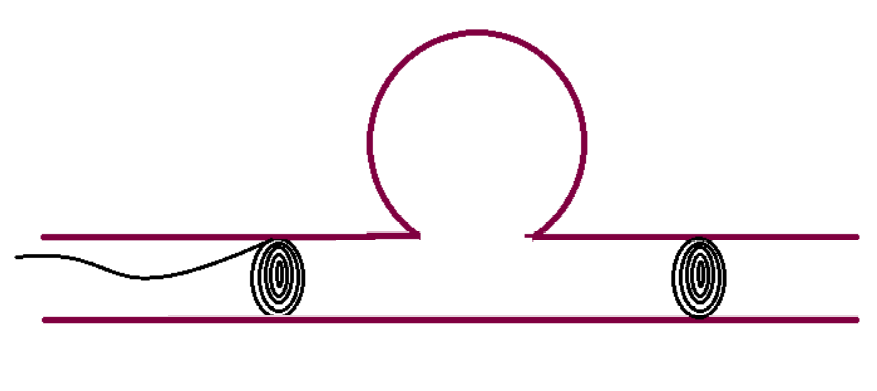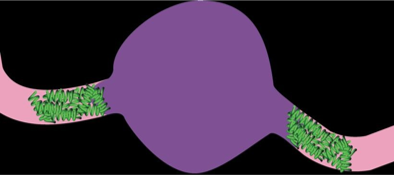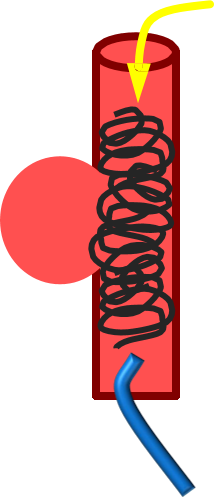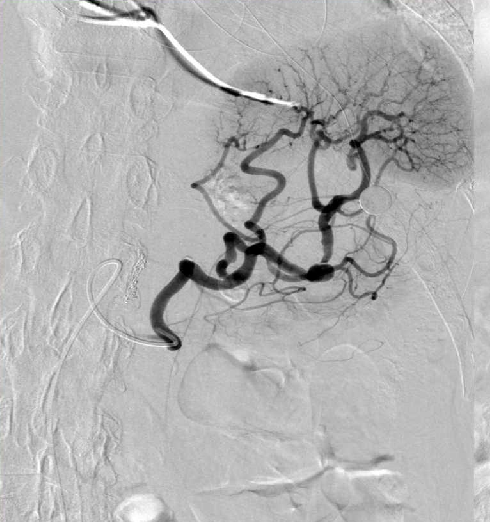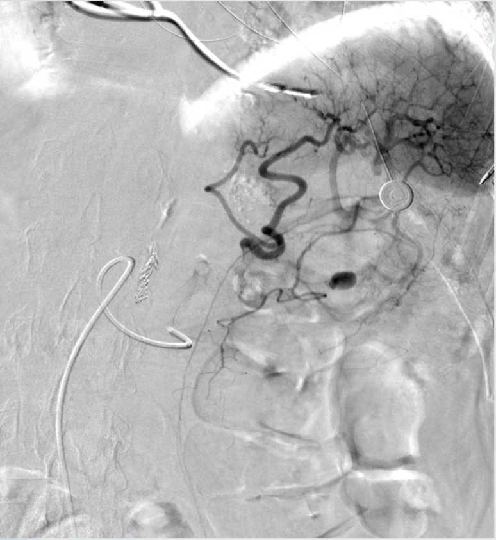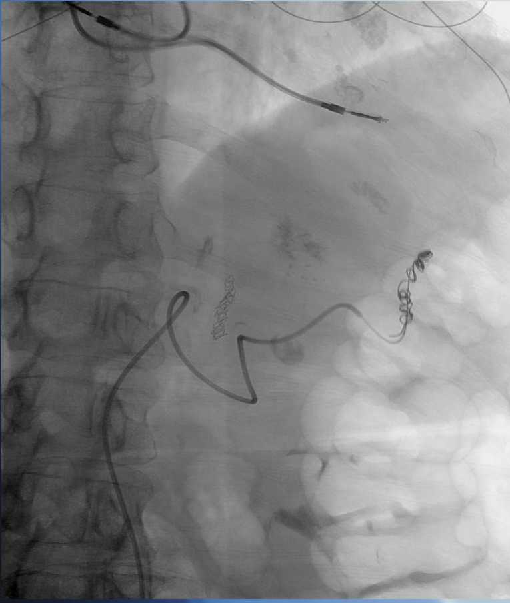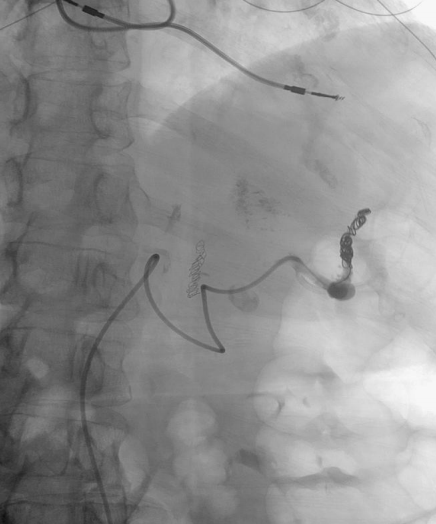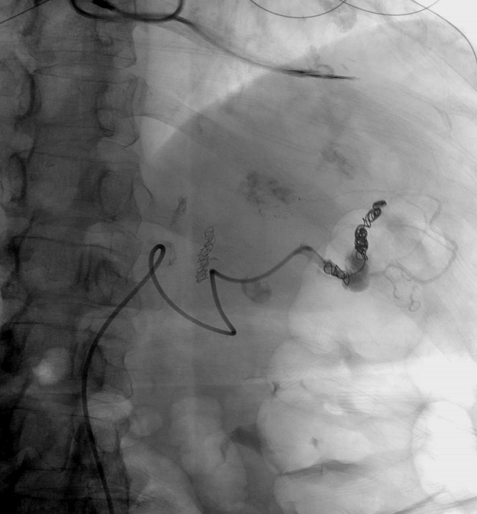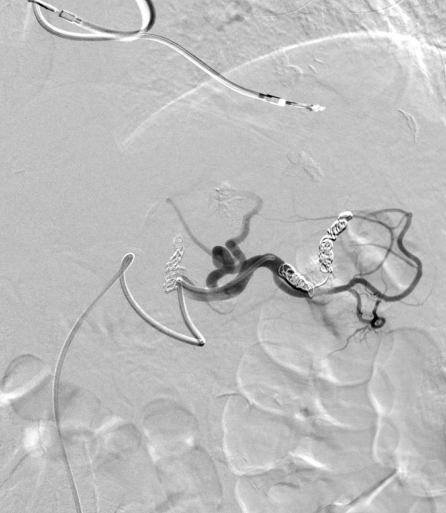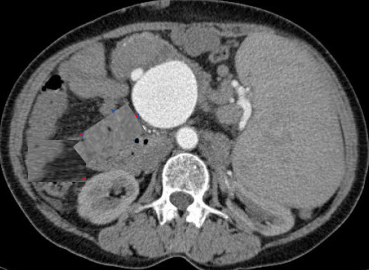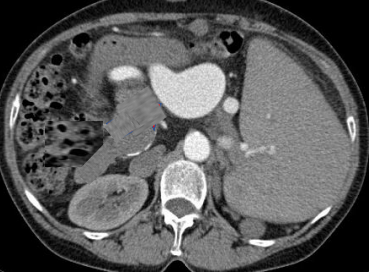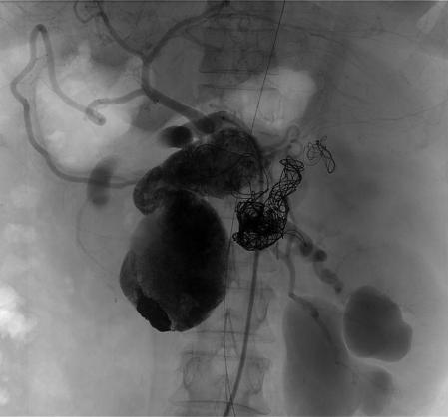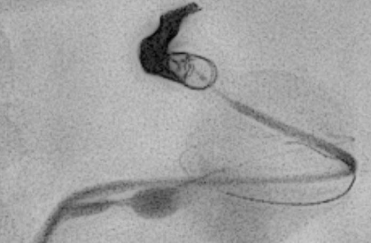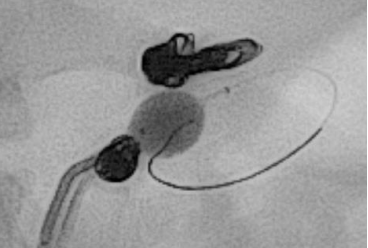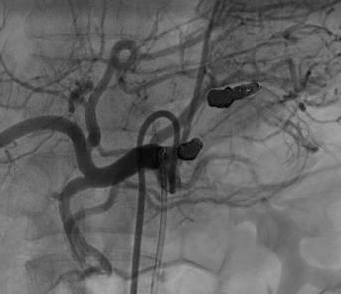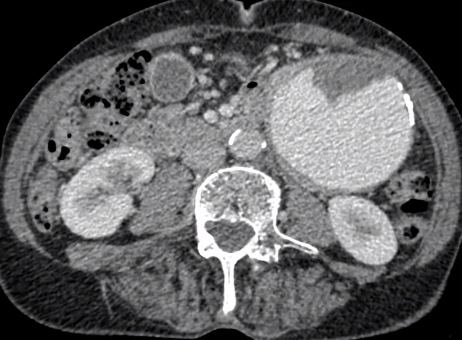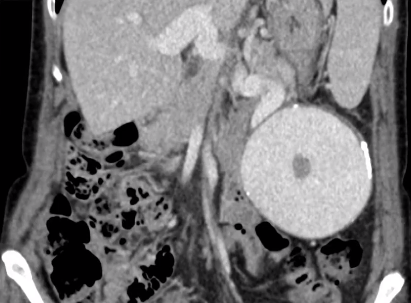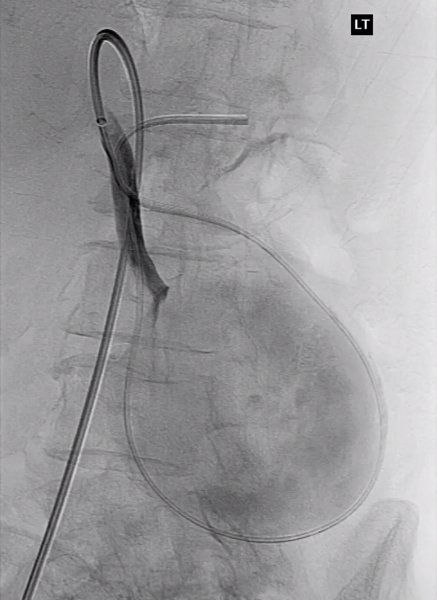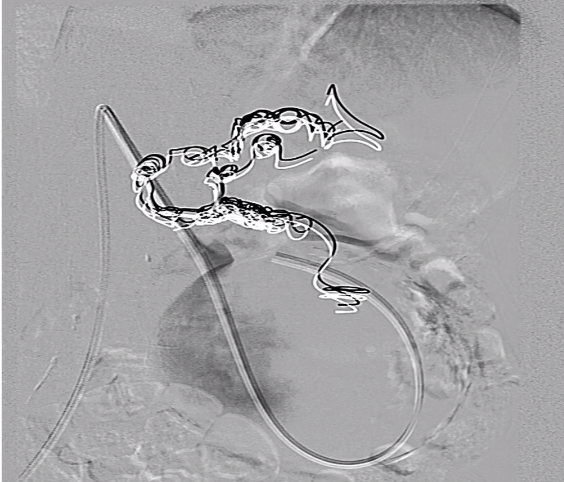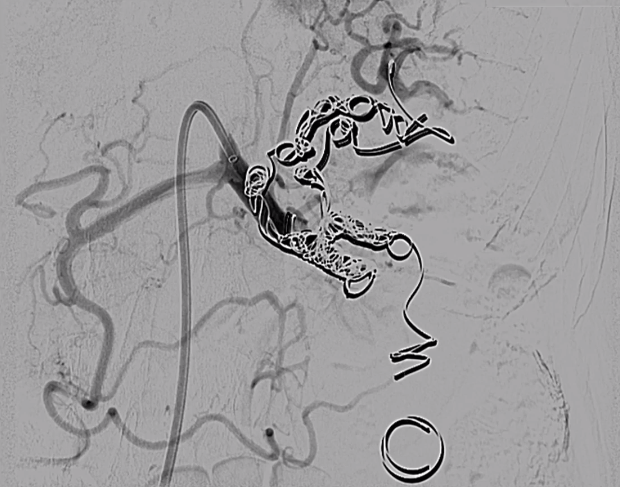脾动脉瘤栓塞前后门技术,又称为三明治(sandwich)技术,如下图
Identify and occlude every collateral that may feed the aneurysm
Need to Close the Back Door
最为常用的技术,主要用于宽颈或较大的动脉瘤(packing 技术可能需要超多的弹簧栓子)需要首先将导管/微导管选择到动脉瘤的远端。将远端阻塞后再阻塞脾动脉瘤近端。潜在面临脾梗死和脾功能缺失。栓塞后再通也比较少见。
63岁 女性 巨大脾动脉瘤和脾大
原发性门静脉高压,脾大和全血细胞减少
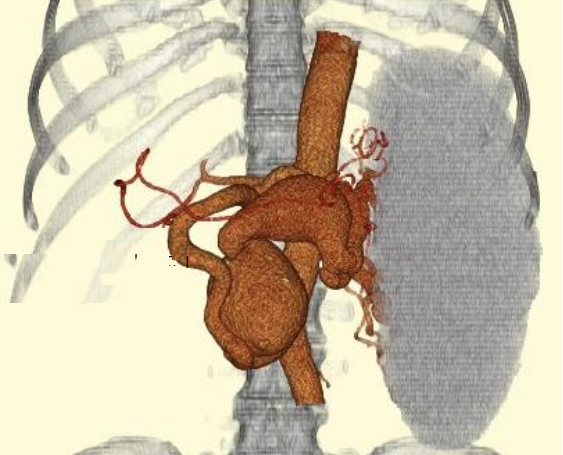 |
|
The diameter of splenic aneurysms were 64mm(1) and 57mm(2). This patient`s LGEA(red arrow) was communicating with lower polar artery.
|
 |
|
We planed to perform partial splenic embolization(PSE) to superior polar artery.The microcatheter advanced in the superior polar arterial branch and partial embolization using gelatin sponge and microcoil was performed
|
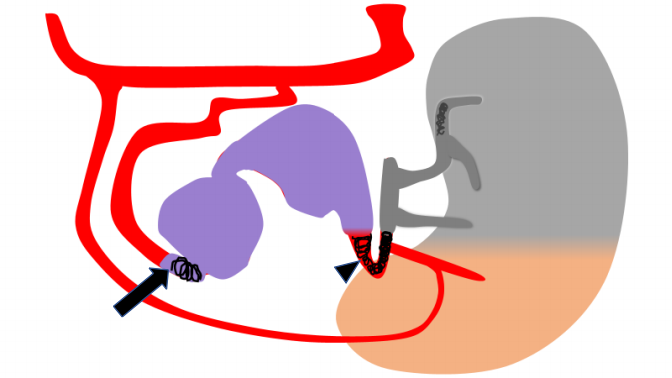 |
|
About one month later, we performed second PSE additionally to superior and middle polar arterial branches using gelatin sponge. Sclerosing agent (NBCA:lipiodol=1:2 and 1:3) directly injected into the splenic aneurysms under flow control using balloon catherter(black arrow point), after microcoil embolization of the distal artery (arrowhead).Next, the trunk of proximal artery was occluded by microcoil and NBCA(black arrow).Subsequent angiography showed lower pole of splenic blood flow was preserved.
|
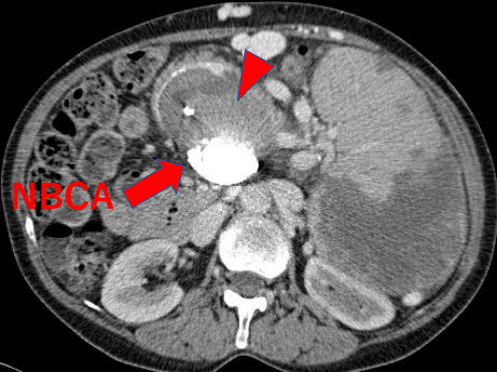 |
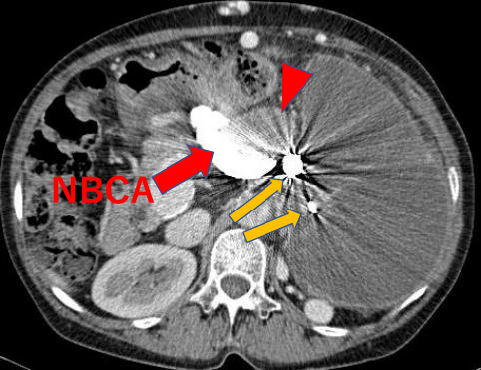 |
|
Follow up contrast enhanced CT performed a week after the procedure showed that blood flow of these aneurysms(arrowheads) was occluded completely. The infarction rate was estimated about 69%. (a)splenic infarction.
|
Staged endovascular treatment for giant splenic artery aneurysm and massive splenomegaly : A case report.
Yohei Koyashiki, Hiroyasu Nakamura, Atsushi Ugajin,
Naoki kunitomo, Yuichiro Kawahara, Takahiro Sasaki,
Shigeyoshi Kijima, Hideharu Sugimoto
Department of Radiology, Jichi Medical University
孕妇
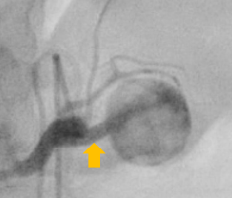 |
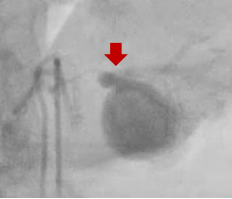 |
|
入路 |
出路 |
VAA率最高-孕妇+经产妇
-
Highest rate of VAA — expectant mothers + multiparous women
-
自然破裂 70-75%孕妇和90-95%胎儿死亡 Spontaneous rupture => 70-75% maternal & 90-95% fetal death
-
最高破裂率是妊娠晚期和出生后早期 Highest rupture rate is 3rd trimester(妊娠末三个月) & early post birth
-
40%的妊娠期脾动脉瘤破裂 40% splenic aneurysms rupture during pregnancy
临床病史:74岁女性,身体健康,上腹不适,体检左上腹部有肿物,CT检查以排除恶性肿瘤
脾动脉瘤约占所有内脏动脉瘤的60%。巨大的动脉瘤是罕见的,文献曾有过描述。一般来说,它们是偶然被诊断出来的。建议治疗有症状的动脉瘤、大于2cm的动脉瘤、生长中的动脉瘤以及所有孕妇和育龄妇女。血管内治疗被认为是首选,其次是手术。
巨大脾动脉瘤是罕见的。血管内治疗是第一种治疗选择,无论动脉瘤大小如何,其效果都很好。
|


